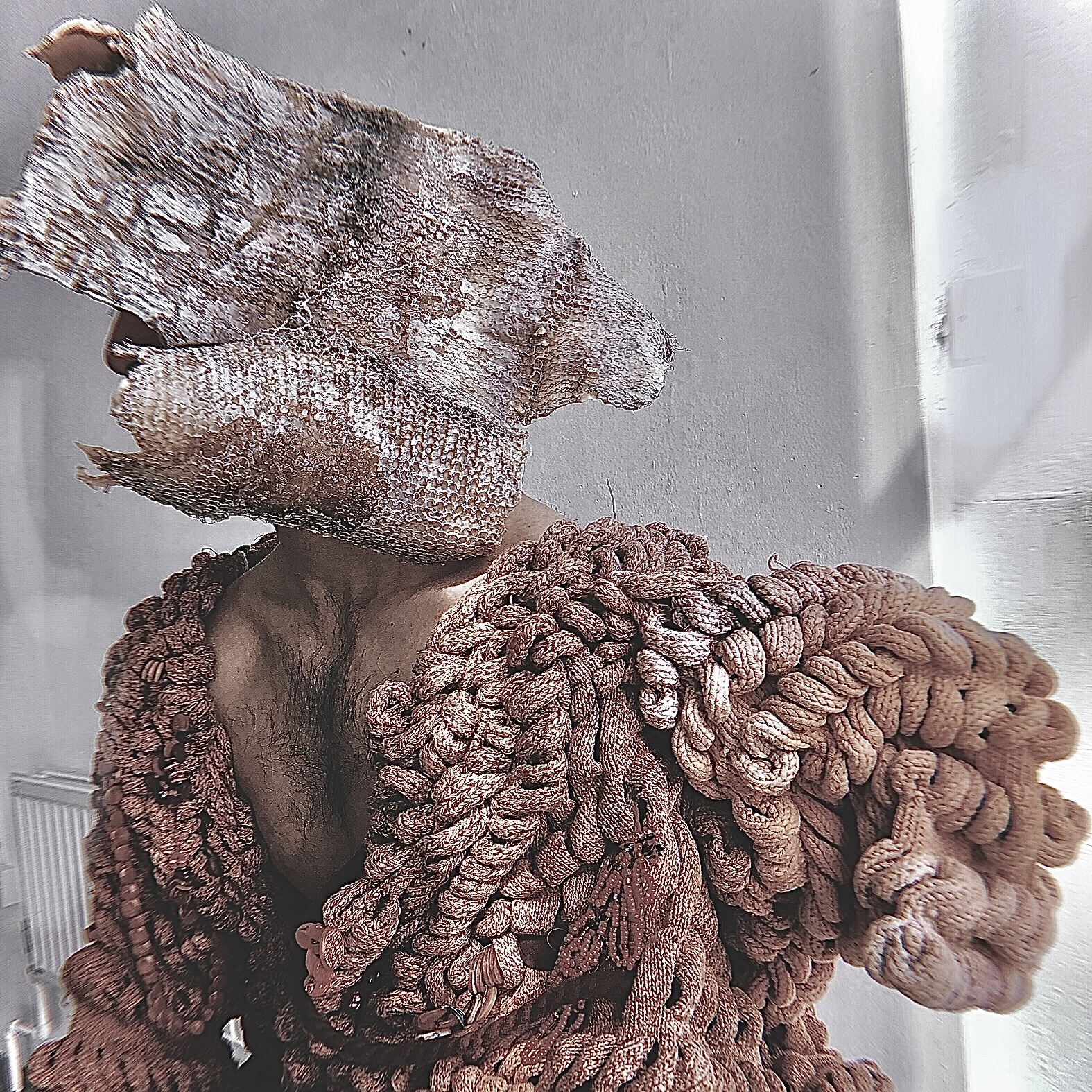
The work explores rebirth and the bodily experience of existing between soul and body, where material objects absorb energy and carry the presence of spirits. Materiality is approached through the lens of religious beliefs and ritualistic movements, recognizing air and movement as forces that shape space and influence perception. Memory, too, is understood as mutable—shifting with time, history, and the way relationships with the past are continuously redefined. Through this lens, art becomes an act of transformation: a process where hate may turn into love, and memory may be preserved or reimagined depending on how it is carried. This practice engages with memory, lineage, and emotional burden—threads of experience that knot, tangle, and unravel across generations. In the sculptural work Fishermans costume form emerges as a shed skin or cocoon, suggesting transformation, abandonment, and the fragile tension of identity. Described as a “soft monument,” it holds a paradox: the delicacy of fabric raised into a towering, monumental presence. It is a tribute built from weakness, simultaneously creature-like, shrouded, and ancient, yet resonant with contemporary urgency. The piece seeks peace within chaos. Its surface decays, yet bursts of color persist—flowers sprouting from rubble, memories resurfacing from loss. Composed of time-worn fabric, newspaper, and discarded threads, the sculpture becomes a tactile poem of erosion and resilience. An internal cylindrical support allows the work to rise upright, giving it an almost animate stance, as if it were a being emerging from another epoch to whisper through fibers and fray. The work embraces contradiction: chaotic yet ordered, decomposing yet vital. Fragility becomes a form of beauty; intricacy becomes a language of survival. Like plants that grow and wither in cycles, the sculpture embodies a craftsmanship born of destruction.
